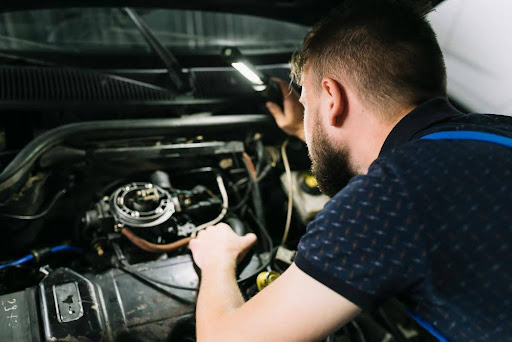DPF Filter Elimination/Delete Since the “Euro 5” criterion went into effect in 2009, the exhaust discharge requirements for new cars have effectively mandated the installation of a DPF in the exhaust of diesel automobiles. Some cars registered before 2009 are going to have one installed as well in preparation for the regulations change. Standards provide for an 80% decrease in diesel particle (soot) emissions; but, as owners are finding out at a very high cost, the technology is not without problems. If you ever need some help with your DPF removal then know that experts at DPF removal birmingham.
How are they operational?
The DPF is located near the engine and has a similar appearance to a standard exhaust silencer. Inside is a complex ceramic honeycomb structure designed to reduce flow decrease and filter exhaust gases, both of which might restrict efficiency otherwise. The particle problem is addressed on the wall surfaces by pushing the exhaust gases through the spaces between the DPF networks, reducing the quantity of air pollution. Upon reaching a specific level of “Saturation,” the DPF initiates a process of regeneration aimed at combusting the particulate matter within the filter.
DPF Upkeep
The typical life of a DPF is approximately 75,000 miles, but this may vary significantly based on how the car is used and the state of the engine. The particle matter is melted down to a much lower amount of finer soot each time the ECU triggers a regeneration cycle; nonetheless, these are not completely removed from the filter. Over time, the amount of fine soot online content builds up to the point that the regeneration process is unable to be started; at this point, the filter needs to be replaced or cleared. It is generally advised to remove the DPF to examine the opacity of the exhaust emissions, as this may indicate possible issues with operation that could affect the DPF’s functioning.
Taking out a DPF is simple!
These days, some businesses have struck gold. They suggest removing this anti-pollution equipment from autos in exchange for a price. There are two phases to the procedure. First, there is the utilisation of software. It entails reprogramming the computer to exclude the diesel particulate filter from consideration. The second phase involves making direct contact with the exhaust pipe. After that, the DPF is removed, cleaned, and then welded back onto the line. Consequently, it just turns into a basic component of the fine’s passage, which will pass by the silencers and then return to the natural world. However, some people think the procedure is not noticeable because the DPF removal is not readily apparent visually. Is this lawful, is the question. Issues like oil-leaking injectors and dripping engines may drastically reduce a DPF’s lifespan.
It’s against the law to remove the DPF!
In late 2014, the Highway Code’s article L. 318-3 expressly forbade «removing a pollution control device ». Penalties for this might reach £7,500. It is reasonable to need the tools to operate a car that has been stripped down there. The tightening of professional checks, which occurred in May 2018, highlighted examinations connected to pollution. On the other hand, the lack of a functional DPF is not consistently identified. But in 2019, a tightening was declared. The goal is to conduct more thorough inspections to put an end to the stripping phenomena. Will it always work? It’s challenging to say. Since the government’s objective is unmistakably to eliminate DPF and catalyst removals, there’s minimal dispute that this relies on the kind of vehicle and maintenance practices.
Should the DPF be replaced or stripped?
Taking off the diesel particulate filter instead of changing it appears to be the answer to every issue. The operation is not without risk, though, and in the years to come penalties will probably grow more formalised. Additionally, the majority of centres providing this service have agreed to sign disclaimers. It is recommended that you replace your car’s DPF instead of having it removed, even if it is more expensive. Are you aware that there are simple methods to stop this device from clogging? Finally, there are serious ethical issues with eliminating the DPF. Whatever the DPF emits is easily able to get into the lungs and escape freely into the atmosphere. For those who are more susceptible (elderly adults, children, etc.), the outcomes may be disastrous.
Is it possible to remove your car’s DPF in two steps?
Here’s how it’s done for the most inquisitive (or obstinate) among you. The DPF must be digitally removed as the initial step. You must reprogram the calculator to remove the diesel particulate filter’s inclusion to accomplish this. As it does in the occurrence of a defect or blockage, the regeneration mechanism would cease to be activated, and the DPF warning light wouldn’t illuminate. Mechanics can read, store, and then inject an entirely fresh engine map afterwards. You may purchase them for as little as £50. The crucial query is: do you think you could accurately rewrite your engine map? We let you make that decision.
Final Words
In 2018, the roadworthiness exam underwent its initial tightening. The number of checks about pollution was raised by the recent laws. On the other hand, it wasn’t consistently found that there was no functional diesel particulate filter. 2019 has seen a tightening of the screws, which helps to alter the circumstances.




